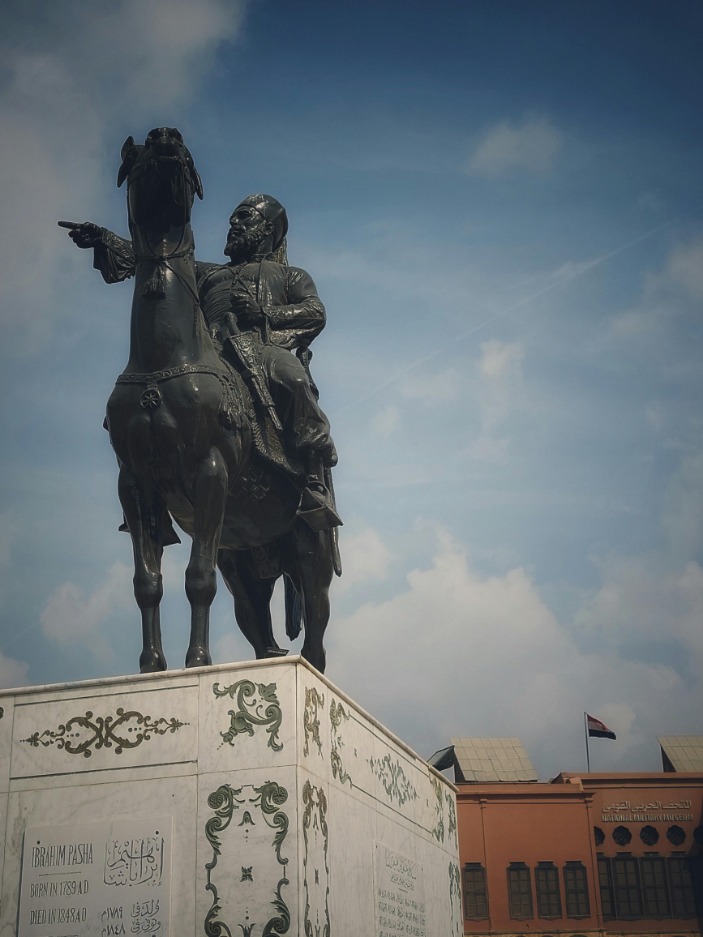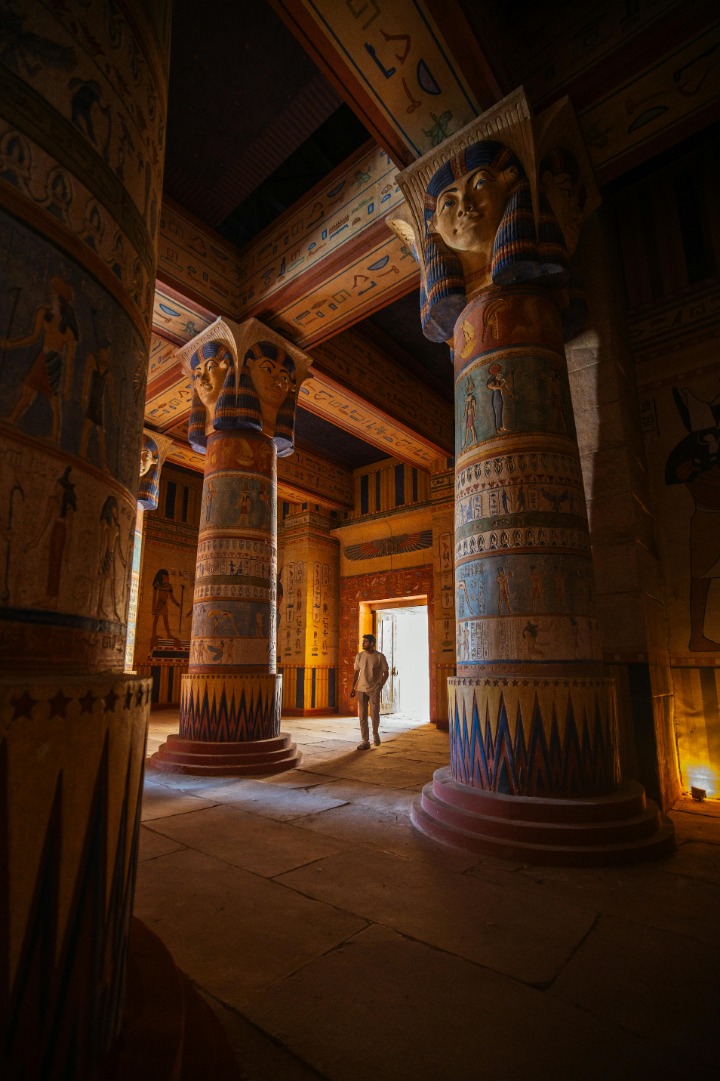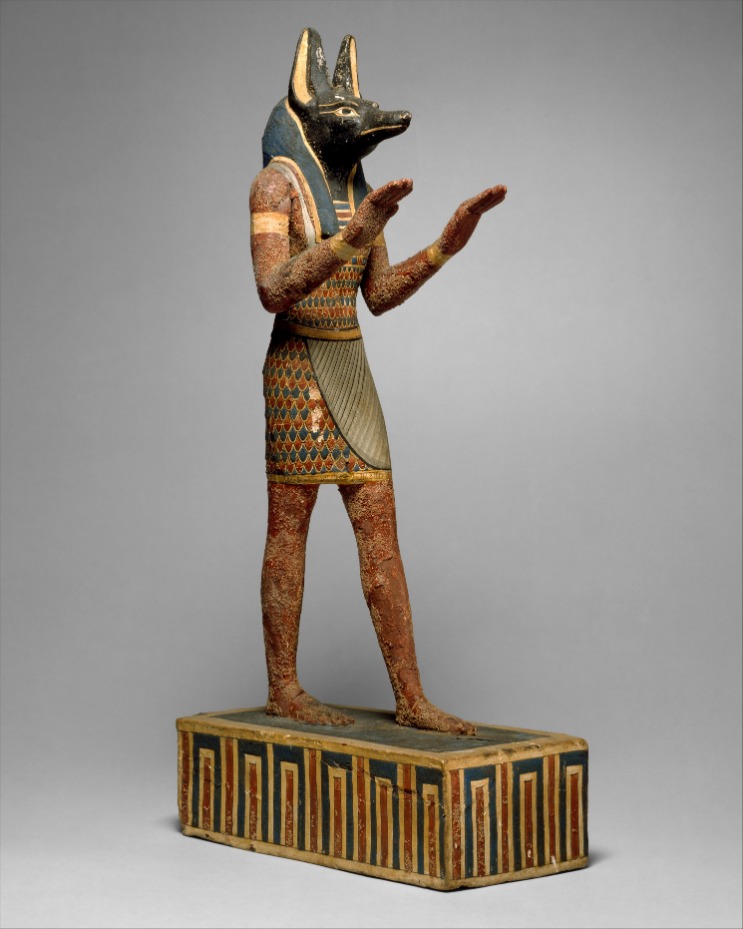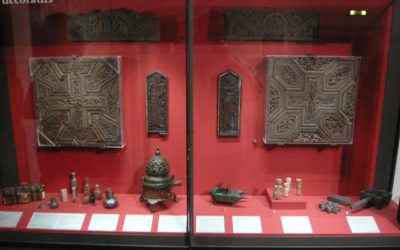Historical Overview of Egyptian Art
Egyptian art is one of the oldest and most distinctive artistic traditions in human history, spanning over three millennia. It reflects the cultural, religious, and social values of ancient Egypt, showcasing remarkable craftsmanship in sculpture, painting, and architecture. Throughout its long history, Egyptian art evolved while maintaining a consistent style that emphasized order, harmony, and eternity, leaving a lasting legacy that continues to inspire and fascinate today.
Origins and Early Developments
The art of ancient Egypt is one of the most distinctive and enduring cultural achievements of human civilization, with origins dating back to the Predynastic Period around 4000 BCE. Early Egyptian art was closely linked to religious beliefs and the afterlife, serving as a means to ensure immortality for the deceased and to honor gods and pharaohs. During these formative years, rudimentary sculptures, pottery, and paintings began to take shape, reflecting a desire for order and harmony in their representations.
The Early Dynastic Period (circa 3100–2686 BCE) marked the development of a more standardized artistic style, characterized by formalized portraits, the use of hieroglyphic inscriptions, and the creation of tomb-related objects. The unification of Upper and Lower Egypt under a single ruler led to the establishment of a centralized artistic tradition that would influence subsequent periods. Artistic conventions, such as rigid postures, frontal depictions, and hierarchical scaling, emerged to communicate social and spiritual hierarchies.
During the Old Kingdom (circa 2686–2181 BCE), the art continued to evolve with the construction of iconic monuments like the pyramids and the development of elaborate funerary art, including statuary and wall paintings. These works were characterized by precision and adherence to established rules, emphasizing permanence and divine authority. The craftsmanship during this time laid the foundation for the grandeur and sophistication that would continue throughout Egyptian history.
Art During the Old Kingdom
Egyptian art during the Old Kingdom, which spanned from approximately 2686 to 2181 BCE, reflects the civilization’s emphasis on stability, order, and the divine nature of its rulers. This period is marked by the development of highly stylized and symbolic art forms that aimed to ensure a lasting legacy for pharaohs and their divine status. Sculpture and tomb reliefs were dominant mediums, often depicting the pharaohs in idealized forms to emphasize their divine authority and eternal rule.
Artworks from this era are characterized by geometric precision, a focus on proportion, and a convention of using specific postures and gestures to communicate power and permanence. Prominent examples include statuary of kings and queens, such as the famous seated statues of Khafre and Menkaure, which embody stability and timelessness. Tombs and burial sites, like the Step Pyramid of Djoser designed by Imhotep, showcase innovative architectural techniques and serve as spiritual gateways for the afterlife.
Overall, Old Kingdom art set the foundation for subsequent artistic developments in Egypt, emphasizing continuity, religious significance, and the transmission of divine authority through enduring imagery. Its legacy is visible in the enduring grandeur and symbolic richness that define ancient Egyptian art across centuries.
Art in the Middle and New Kingdoms
The history of Egyptian art reflects the civilization’s enduring cultural values and spiritual beliefs, spanning thousands of years from early prehistoric times through the classical periods. During the Middle Kingdom (circa 2050–1710 BCE), Egyptian art became more expressive and detailed, emphasizing realism and individual features. Artists focused on intimate portrayals of people and mythological themes, often evident in tomb decorations and sculpture. This era also saw the development of more sophisticated tomb architecture and intricate jewelry, reflecting both religious ideas and social hierarchy.
In the New Kingdom (circa 1550–1070 BCE), Egyptian art reached new heights of grandeur and innovation. The period is characterized by monumental architecture, including the construction of grand temples and tombs such as those in the Valley of the Kings. Artistic styles became more dynamic and expressive, blending realism with idealism to convey power and divine authority. Temples like Karnak and Luxor exemplify elaborate hieroglyphic carvings and massive statues that served religious and political purposes. The artistic mastery displayed during this period underscored Egypt’s wealth, stability, and connection to Egyptian theology.
Post-Pharaonic Artistic Influences
The art of Egypt has a rich and complex history that spans thousands of years, beginning with ancient Egyptian civilization and continuing through various post-pharaonic influences. Following the decline of the Pharaonic period, Egypt experienced numerous cultural and artistic shifts due to foreign conquests, trade, and religious changes, which significantly shaped the evolution of its artistic traditions.
During the Greco-Roman era, Egyptian art absorbed influences from Greek and Roman styles, resulting in a blend of classical motifs and traditional Egyptian iconography. This period saw the development of new artistic forms, such as portrait busts and intricate frescoes, while still maintaining core elements of Egyptian symbolism and craftsmanship.
The Coptic period marked a significant transformation in Egyptian art, merging Christian themes with earlier Egyptian artistic techniques. This era introduced new iconography and religious imagery, evident in Coptic textiles, manuscripts, and ecclesiastical art, which reflected the spiritual transitions of Egyptian society.
Islamic influence became prominent after the Arab conquest of Egypt in the 7th century. Islamic art introduced geometric patterns, calligraphy, and arabesque motifs, shaping the design of mosques, textiles, and metalwork. The use of intricate decoration and symbolism persisted, reflecting Egypt’s evolving religious and cultural identity.
Throughout the Ottoman period and into modern times, Egyptian art continued to adapt, integrating contemporary styles with traditional motifs. Artists like Mahmoud Mokhtar and others pioneered modern Egyptian art, blending Western techniques with indigenous themes to express national identity and cultural pride.
- The influence of Greek and Roman art during late antiquity
- The development of Coptic Christian art and iconography
- Islamic artistic motifs and geometric designs after the 7th century
- Modern Egyptian art, merging Western and indigenous styles
Key Characteristics of Egyptian Art
The art of Egypt is renowned for its distinctive style and symbolic significance, reflecting the civilization’s rich history and spiritual beliefs. Characterized by a focus on order, permanence, and clarity, Egyptian art emphasizes precise proportions and a sense of balance. It often depicts gods, pharaohs, and scenes of daily life, incorporating idealized forms and hieratic scale to convey importance and divinity. These key characteristics have contributed to the enduring legacy of Egyptian artistic achievement across millennia.
Symbolism and Religious Significance
The art of Egypt is renowned for its distinctive style, deep symbolism, and profound religious significance. It reflects a civilization deeply rooted in spirituality and the belief in an afterlife, which is evident in the sophisticated and highly stylized forms used in sculpture, painting, and architecture. Egyptian artists emphasized clarity, order, and symmetry, often portraying figures in a standardized profile view to convey their importance and spiritual essence.
Symbolism plays a vital role in Egyptian art, with common motifs such as the scarab beetle representing rebirth, the ankh symbolizing life, and the lotus flower denoting creation and regeneration. These symbols were integrated into monuments, tombs, and religious objects to convey spiritual beliefs and connect the earthly with the divine.
Religious significance is central to Egyptian art, as most artworks served a purpose related to worship, the afterlife, or divine mythology. Temples, tombs, and statues were designed to honor gods and ensure a successful journey into the afterlife. The art often depicted gods and pharaohs with divine attributes, emphasizing their semi-divine status and their role as mediators between gods and humans.
Adherence to Artistic Conventions
Egyptian art is renowned for its distinct style and adherence to specific artistic conventions that aimed to ensure continuity, order, and spiritual harmony. It reflects a deep connection to religion, the afterlife, and societal stability, which are central themes throughout their artistic achievements.
- Consistency in Proportions and Iconography: Egyptian artists maintained strict rules for depicting human figures, often using a composite view where heads and legs are shown in profile, while torsos are facing forward. This standardized approach ensured clarity and recognizability.
- Symbolism and Stylistic Conventions: Every element, from colors to posture, held symbolic meaning. Colors represented different deities or concepts, and figures often held specific gestures that conveyed status, emotion, or divine nature.
- Focus on Eternity and Afterlife: Artworks primarily served religious and funerary purposes, emphasizing eternal life, with tomb paintings and sculptures designed to assist the deceased in the afterworld.
- Use of Hierarchical Scale: Important figures, such as gods or pharaohs, were depicted larger than other subjects, emphasizing their divine or societal importance.
- Rigidity and Formality: Artistic compositions tend to be formal and symmetrical, reflecting stability and order, core values of Egyptian society.
- Adherence to Artistic Conventions: Artists strictly followed traditional patterns and standards passed down through generations, ensuring a cohesive and recognizable style that defined Egyptian art for millennia.
Materials and Techniques
Egyptian art is renowned for its distinctive style, characterized by its emphasis on order, clarity, and symbolism. It often features highly idealized figures, with a focus on portraying the eternal and divine aspects of rulers and deities. The artworks typically follow strict conventions, such as profile views for heads and limbs, combined with frontal views for torsos, creating a sense of consistency and harmony.
Materials used in Egyptian art were primarily durable and locally available, including stone such as limestone, sandstone, and granite. Artists also employed wood, precious metals like gold and silver, glazed pottery, and faience—a type of glazed non-clay ceramic material that mimicked bright colors like blue and green. These materials contributed to the longevity and vibrancy of Egyptian artworks.
Techniques in Egyptian art involved carving, sculpting, and inlay work. Skilled artisans utilized chisels and hammering tools to carve reliefs and statues from stone. Painting was done using mineral-based pigments, which were mixed with binders and applied to surfaces to produce vivid colors that have often survived through the ages. Techniques like sunk relief and the use of registers helped organize scenes and narratives, giving Egyptian art its characteristic clarity and orderliness.
Major Forms of Egyptian Art
Egyptian art is renowned for its timeless beauty and symbolic significance, reflecting the civilization’s religious beliefs, social structure, and views on the afterlife. Major forms of Egyptian art include sculpture, painting, reliefs, and architecture, each serving both functional and ceremonial purposes. These art forms are characterized by their distinctive styles, use of symbolic motifs, and meticulous craftsmanship, making Egyptian art an enduring symbol of ancient Egyptian culture.
Sculpture and Statues
The art of Egypt is renowned for its distinctive styles, techniques, and symbolic meanings, reflecting the civilization’s religious beliefs, social hierarchy, and artistic innovations. Major forms of Egyptian art include sculpture and statues, which played a vital role in both religious practices and funerary customs.

- Sculpture: Egyptian sculptures are characterized by their formalized, idealized representations of gods, pharaohs, and important individuals. These sculptures often served as offerings or tomb decorations and were created using materials such as stone, bronze, and wood. The figures are typically depicted in a rigid, frontal pose with a sense of permanence and timelessness, emphasizing their divine nature or eternal life.
- Statues: Statues in Egypt ranged from small statuettes for personal devotion to massive statues of Pharaohs and deities. Notable examples include the Great Sphinx of Giza and statues of Ramses II. These statues often featured detailed carvings, inscriptions, and symbolic elements to convey power, protection, and religious significance.
Wall Paintings and Reliefs
The art of Egypt is renowned for its rich history and distinctive style, especially in the realm of wall paintings and reliefs. These artworks served not only as decorative elements but also as a means to convey religious beliefs, social hierarchy, and daily life. Wall paintings in tombs and temples often depict scenes from the afterlife, offerings, rituals, and mythological stories, providing valuable insights into ancient Egyptian culture.
Reliefs were a major form of Egyptian art, characterized by carved images carved in stone or added as painted stuccoes. They typically featured hieroglyphic inscriptions combined with figures of gods, pharaohs, and common people. These reliefs were used to decorate the walls of tombs, temples, and palaces, emphasizing the power of rulers and their divine connection. The art style is marked by a strict adherence to proportion, profile perspective, and symbolic use of color.
Overall, Egyptian wall paintings and reliefs are distinguished by their clarity, formalized figures, and symbolic content, reflecting the civilization’s focus on eternity, divine authority, and the importance of life after death. These major art forms continue to influence modern perceptions of ancient Egypt and remain some of the most significant achievements in world art history.
Pottery and Jewelry
The art of Egypt is renowned for its enduring beauty and distinctive styles, encompassing a wide range of forms that reflect the civilization’s rich cultural heritage. Major forms of Egyptian art include sculpture, painting, pottery, and jewelry, each serving both functional and symbolic purposes.
Sculpture in Egypt is characterized by its remarkable realism and idealization, often depicting gods, pharaohs, and important figures with a sense of permanence. Statues were crafted from materials like stone, bronze, and wood, frequently inscribed with hieroglyphs that conveyed their significance and divine status.
Egyptian painting mainly adorned tombs and temples, using a distinctive style that emphasized profile views and hierarchical proportions to denote importance. The use of vibrant colors and detailed scenes helped illustrate the journeys of the deceased and scenes from daily life or religious practices.
Pottery was an essential aspect of Egyptian daily life, with pottery vessels ranging from simple everyday ware to elaborately decorated pieces. Techniques such as wheel-throwing and hand-modeling produced items used for storage, cooking, and ceremonial purposes. Decorative motifs often included geometric patterns, animals, and symbols associated with rebirth and protection.
Jewelry was highly developed in ancient Egypt, reflecting social status, religious beliefs, and aesthetic values. Egyptians crafted jewelry from gold, silver, and semi-precious stones like carnelian, turquoise, and lapis lazuli. Common jewelry items included necklaces, bracelets, rings, earrings, and amulets, each often inscribed with protective symbols or spiritual icons. The craftsmanship demonstrated advanced techniques and a keen eye for detail, producing pieces that continue to symbolize Egyptian culture today.
Funerary Art and Tomb Decorations
The art of Egypt is renowned for its diversity and symbolic richness, reflecting the civilization’s spiritual beliefs, social hierarchy, and views on the afterlife. Major forms of Egyptian art include sculpture, painting, jewelry, and architecture, all serving both functional and ceremonial purposes. Among these, funerary art and tomb decorations hold a special significance as they are primarily aimed at honoring the deceased and ensuring their eternal life.
Funerary art in Egypt encompasses a range of objects and monuments created to memorialize the dead, such as sarcophagi, stelae, and ushabti figurines. Tomb decorations are elaborately designed to adorn the walls of tomb chambers, illustrating scenes from the deceased’s life, religious rituals, and deities that would aid their journey to the afterlife. These decorations often employ symbolic imagery and hieroglyphic inscriptions to convey spiritual messages and ensure the deceased’s well-being in the afterworld.
- Wall Paintings: Vivid scenes depicting daily life, religious rituals, and mythological stories, designed to provide comfort and familiarity in the afterlife.
- Reliefs and Carvings: Intricate carvings on tomb walls and false doors, often showing offerings and divine encounters.
- Canopic Jars and Coffins: Artistic containers and coverings decorated with divine motifs and hieroglyphs, meant to protect and preserve the body and organs.
- Stelae: Stone slabs inscribed with reliefs and texts commemorating the deceased, often placed near tomb entrances.
- Funerary Furniture: Elaborate beds, chairs, and offering tables, decorated with symbolic motifs to serve the needs of the deceased in their journey beyond death.
Notable Artworks and Artisans
The art of Egypt boasts a rich and intricate history, reflecting thousands of years of cultural development and craftsmanship. Notable artworks and artisans from this ancient civilization have left an indelible mark, showcasing masterful techniques in sculpture, painting, jewelry, and pottery. These works not only serve as artistic achievements but also as valuable insights into Egypt’s religious beliefs, societal structure, and daily life throughout the ages.
Iconic Statues and Monuments
Egyptian art is renowned for its rich history and extraordinary craftsmanship, reflecting the civilization’s spiritual beliefs and cultural achievements. Notable artworks include the ancient wall paintings found in tombs, which depict daily life and religious rituals with vivid detail. Skilled artisans crafted intricate jewelry, decorated pottery, and finely carved amulets, showcasing their mastery in various materials.
Iconic statues such as the Great Sphinx of Giza symbolize Egypt’s grandeur and spiritual significance, blending human and lion forms to represent strength and wisdom. Monumental structures like the Pyramids of Giza stand as masterpieces of engineering and artistry, serving as tombs for pharaohs and symbols of divine authority. These monuments and artworks have left an indelible mark on human history, demonstrating Egypt’s extraordinary contribution to the world’s cultural heritage.
Famous Artists and Their Contributions
Egyptian art boasts a rich legacy characterized by stunning craftsmanship and iconic imagery that have profoundly influenced the history of art. Notable artworks include the intricate hieroglyphic inscriptions, monumental statues, and beautifully decorated tombs and temples such as those at Luxor and Karnak. Artisans in ancient Egypt mastered techniques in sculpture, jewelry making, and pottery, often working with materials like gold, limestone, and precious stones, reflecting their skilled craftsmanship and cultural significance.
Famous Egyptian artists and artisans include figures like Thutmose, the master sculptor credited with creating the elegant bust of Queen Nefertiti, a masterpiece celebrated for its detailed realism and aesthetic finesse. Another significant contributor is the artist behind the Ramses II statues, whose work exemplifies the grandeur and durability characteristic of Egyptian colossal sculpture. These artisans contributed not only to art but also to the religious and political identity of ancient Egypt, embedding their craftsmanship within the fabric of Egyptian civilization.
Architectural Achievements
Egyptian architecture stands as a testament to the ingenuity and craftsmanship of one of the world’s earliest civilizations. From monumental pyramids to intricate temples, these architectural achievements reflect the cultural and spiritual significance of the ancient Egyptians. Their legacy continues to inspire awe and admiration, showcasing a remarkable blend of innovation, artistry, and religious devotion.
Pyramids and Temples

The art of Egypt is renowned for its monumental architectural achievements, notably the construction of pyramids and temples that have stood the test of time. These structures exemplify the ingenuity and religious devotion of ancient Egyptian civilization, showcasing advanced engineering techniques and artistry. The pyramids, especially the Great Pyramid of Giza, serve as eternal tombs for pharaohs and symbolize the spiritual journey to the afterlife. Temples such as Karnak and Luxor were designed as grand sacred spaces, featuring imposing columns, intricate carvings, and extensive hieroglyphic inscriptions that depict gods, kings, and mythological stories. Together, these architectural masterpieces reflect Egypt’s rich cultural heritage and the importance placed on religion, immortality, and artistic expression in ancient Egyptian society.
Obelisks and Pilons
The art of Egypt is renowned for its monumental and enduring structures, exemplified by the impressive obelisks and pylons that symbolize the ancient civilization’s architectural achievements. Obelisks are tall, four-sided, narrow tapering monuments with a pyramidion at the top, often carved from a single piece of stone and erected to honor gods or commemorate significant events. These structures demonstrate the skillful craftsmanship and advanced engineering of the Egyptians. Pylons, on the other hand, are massive gateways characterized by their sloping walls and grand scale, serving as the entrance to temples and religious complexes. They embody the grandeur and spiritual significance of Egyptian architecture, designed to impress visitors and reinforce the divine authority of pharaohs. Together, obelisks and pylons highlight Egypt’s architectural ingenuity and its profound dedication to creating lasting symbols of religious devotion and royal power.
Modern Rediscoveries and Interpretations
Modern rediscoveries and interpretations of Egyptian art offer a fresh perspective on an ancient civilization renowned for its rich and enigmatic cultural heritage. By blending traditional motifs with contemporary techniques, artists today revive the mystique and symbolism of Egyptian artistry, making it accessible to a global audience. These creative approaches not only honor Egypt’s historical legacy but also inspire new dialogues and interpretations within the world of fine arts.
Archaeological Discoveries
Modern rediscoveries and interpretations of Egyptian art have profoundly enriched our understanding of ancient Egyptian civilization, shedding new light on its cultural and religious significance. Recent archaeological discoveries continue to unveil intricate details of tombs, temples, and artifacts, revealing the sophistication and symbolic complexity of Egyptian artistic practices. These findings often challenge previous perceptions, prompting scholars to revisit and reinterpret early assumptions about Egyptian aesthetics, social hierarchy, and spiritual beliefs.
Advancements in technology, such as 3D imaging and archaeometric analysis, have enabled researchers to examine artifacts with unprecedented precision, leading to more accurate reconstructions of ancient artworks and their original contexts. The discovery of previously unknown tombs, steles, and statues has provided valuable insights into the evolution of artistic styles, iconography, and craftsmanship across different periods of Egyptian history. These modern interpretations continue to inspire a deeper appreciation of Egypt’s artistic legacy as a testament to its enduring cultural identity.
Influence on Contemporary Art
Modern rediscoveries and interpretations of ancient Egyptian art have significantly influenced contemporary artists by offering new perspectives on timeless symbols and motifs. This renewed interest allows artists to blend traditional Egyptian themes with modern techniques, creating a dialogue between the past and present. The intricate hieroglyphs, regal imagery, and spiritual symbolism continue to inspire innovative visual expressions that explore identity, power, and spirituality.
Contemporary art often incorporates Egyptian-inspired elements such as pyramids, deities, and papyrus motifs, recontextualizing them within modern social and political commentaries. This fusion not only celebrates Egypt’s rich cultural heritage but also challenges viewers to reconsider historical narratives through contemporary lenses. Artists utilize these symbols to evoke a sense of universality, highlighting the enduring influence of Egyptian art across different eras and cultures.
The reinterpretation of Egyptian aesthetics in modern art also fosters a deeper appreciation for the technical mastery and artistic ingenuity of ancient creators. By examining these innovations, contemporary artists pay homage to ancient craftsmanship while pushing the boundaries of conceptual and visual experimentation. This ongoing dialogue enriches the global artistic landscape, fostering a greater understanding and admiration of Egypt’s enduring artistic legacy.





0 Comments